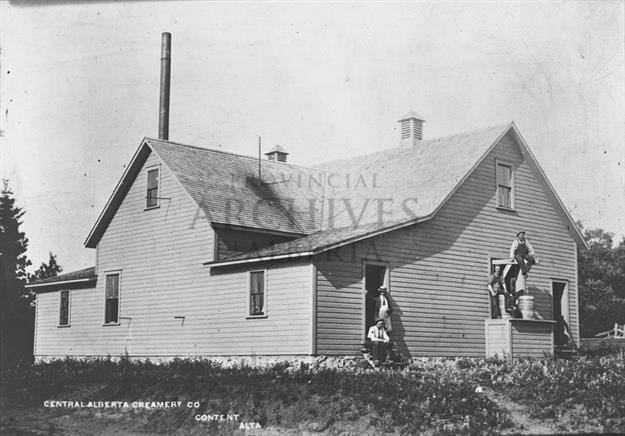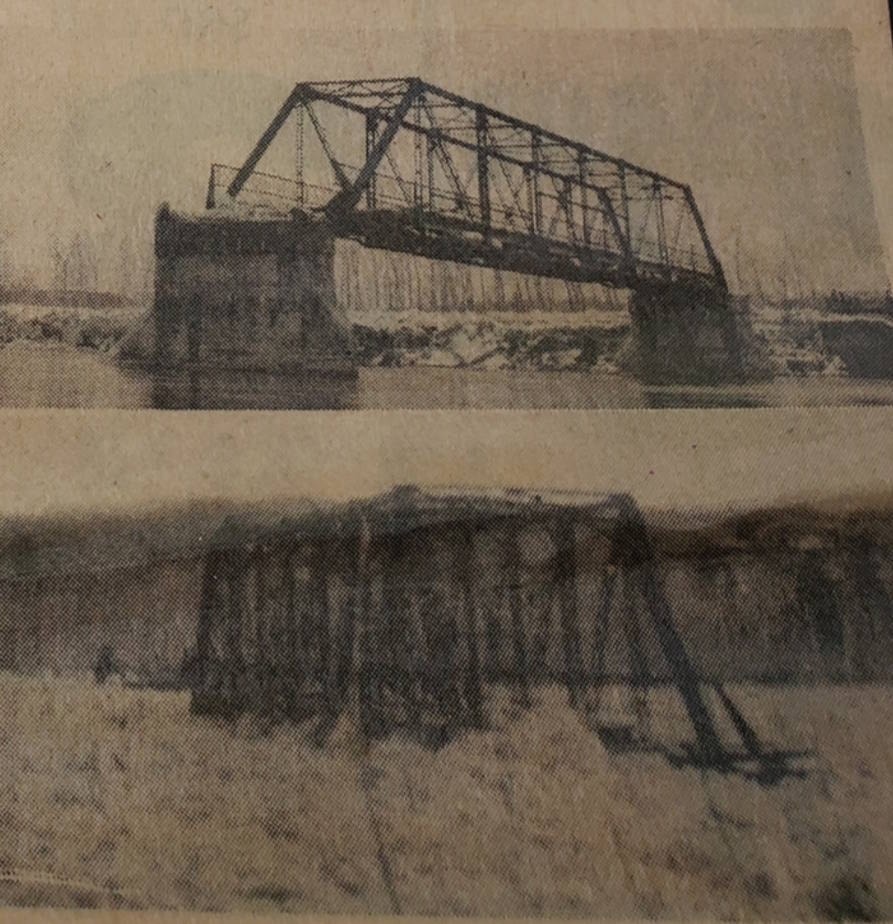By Carson Ellis
There was a fascinating article printed in the Independent back in 1978.
The multi-page story was submitted by Mr. Lester Lohr. In the article, Lohr (then 91 years young) thanks the many people who contributed to his submission.
He notes help from Messers. Harle and Willis, who helped gather information and photos, as well as collecting original materials such as letters and records.
He also thanks a Mr. Ed Allison of Delburne who gave Lohr access to his collection of photos, which included ones that were believed to be the only ones of their kind.
The article explains how the Tail Creek area was the location of a popular ford across the Red Deer river.
Even the Native American population had been using the crossing point for many years. Despite this, when the area was being surveyed and opened to homesteaders, the need for a more reliable crossing was noted as far back as 1890.
This need was quickly growing with the village of Content arriving on the scene.
Those who homesteaded on the west side of the river in areas that would become Ardley, Great Bend, and Delburne, would often have a two- to three-day trek for supplies to either Red Deer, Penhold, or Innisfail, even though if they could reliably reach Content, it would be a one-day trip at most.
Additionally, several sponsors of a local creamery had gone out and secured agreements for butter fat from 600 cows on the west side of the river alone.
Locals were constantly campaigning the territorial government to build a bridge in their area.
A letter from a Dr. Davies was sent in 1904 where he spoke about a local farmer having to cross in the early winter, and the water was up to his thighs at points. The year of 1904 also saw a petition with over 200 names which included: Messers. Carl Stettler, Albert Rairdan, George Deems, Ed Burns, and George Lohr, but it did not seem effective.
The government simply replied to Dr. Davies that a bridge somewhere was being discussed.
The petition was replied to with the suggestion of installing a ferry. This was installed in the spring of 1905 and would later be used by the construction crews for examining rock bed and surveying the area.
An actual solid effort towards a bridge didn’t come until after the creation of the province, and the representatives of the electoral districts of both Red Deer (Mr. John Moore) and Lacombe (Mr. W. Puffer) began campaigning for their constituents.
Both of them would benefit from the construction of a bridge at the Content site. By the fall of 1905, bridge construction for the following summer had been slated, and work would begin in the spring of 1906 after the ice had cleared.
Supplies were freighted into the newly-formed siding of Nevis and brought by wagon to the construction site. Transport of materials was often done by locals who had been hired on by the construction crew and would also be employed for general construction of the bridge itself.
They were paid roughly two dollars a day, with one dollar being charged per day for bunk space and meals at a bunkhouse built on property owned by the Kents who owned a stopping house nearby.
Pumps and cement mixers were powered by upright steam engines which burned coal.
Temporary dams were used to block the water so the rock bed could be properly excavated. The water had to be pumped out of the work site every morning since the temporary dams would leak overnight.
Steel would start arriving in 1906. The total cost of the steel was $9,809.22.
By late October, the cement work was complete.
It is good to point out that the winter of 06/07 was considered especially severe. Despite this, steel crews worked through the winter, and in February of 1907 the bridge was open for traffic. An article in a May edition of the (then weekly) Red Deer Advocate was submitted by Mr. Moore, who extolled the virtues of the bridge, and commended his government for their good efforts. The total cost of the original Content bridge was $35,047.50.
Lohr would note in his article that when the Content bridge was replaced with a wider bridge shortly before 1978, it cost nearly one million dollars, and used much of the framework that already existed.
Creamery business boomed with the completion of the bridge.
Wagons with tanks loaded on them and pulled by horses were dispatched throughout the area. In the article, Mr. Ed Allison recalls the summer of 1910 he spent as an apprentice at the creamery.
He was paid room and board but no wages. His jobs included testing the hundreds of cream samples that came in as well as churning and packaging the butter into the wooden crates that held 50 lbs each.
In 1928 an ice jam down river caused such a backlog of ice and water that the ice level not only reached the bridge, but lifted off two sections of it and carried them down river.
One of them was noted as traveling 15 miles. The provincial government would write the two sections of steel off, and order new spans. They would also add 6 ft. to the piers and abutments.
Lohr doesn’t mention this little bit in his article, but I’ve heard from some folks over the years that after the two spans of the original bridge were recovered, much of it was purchased and used in the construction of one of the incarnations of Superior Garage.
Stettler lore, or fun fact. You decide.

